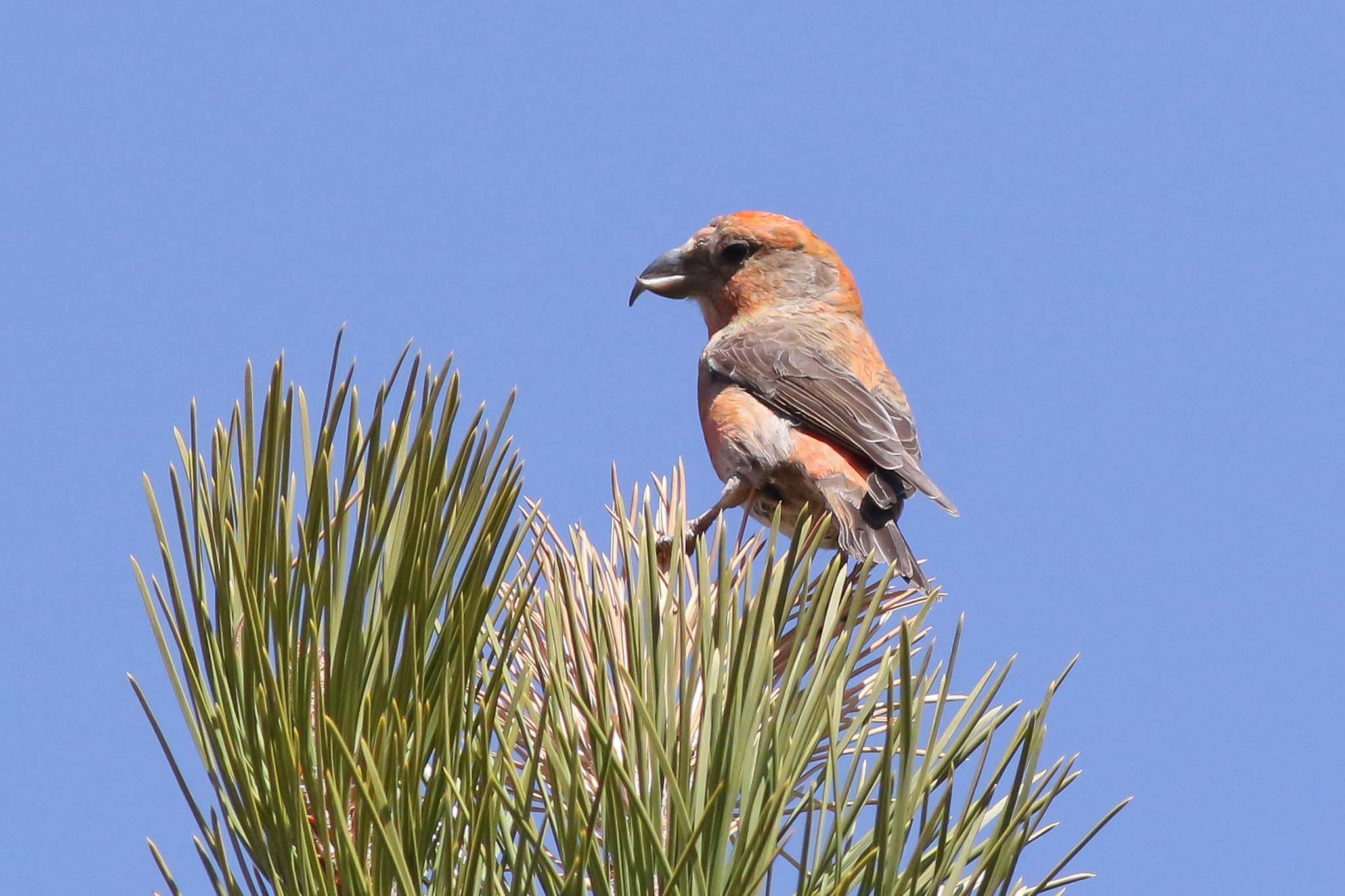The Crossbill Story, Part 6:
By Tom Hahn:
It seems appropriate that I’m putting the finishing touches on this post while sitting in a cabin at Lake Quinault on the western Olympic Peninsula of Washington State. This area holds many fond memories of long, mild summer days plagued by a plethora of at least 5 kinds of biting insects as well as cold, dark winter camps at the wettest place in the lower 48. It is one of the strongholds of the smallest of North American crossbills – Type 3 – the main subject of this post.
Studying the type 2 and 4 crossbill swarms during my first full year of field work was an eye-opener for me in a host of ways, but most notably in convincing me, first, that Jeff Groth’s “types” were definitely real things, second, that at least Types 2 and 4s were not swarming randomly on just any cone crops, and third, that crossbills in general might be much more seasonal in their annual cycle of breeding, molt, and movement than the old literature and “common knowledge” suggested.
Being based in Seattle in the extreme Pacific Northwest, I really had been expecting to mostly be encountering the smallest crossbills, which were usually referred to as “Loxia curvirostra sitkensis/minor.” But it was turning out that so far my experience had been mostly with the larger Types 4 and 2. Type 3s had been around the Puget Sound Basin in the fall of 1987, where I first noticed them as distinct from the ones I had caught east of the Cascade crest (Type 4) because of their very nasal “toop” calls, and because my Type 4 decoys didn’t work very well for luring them into mist nets. Quite a lot were around among the hordes of crossbills in the big Doug-fir crop of 1987-88 east of the Cascade crest, and in late May 1988 I encountered transient flocks gorging on wooly aphids infesting elm trees on the U of WA campus in Seattle. I also encountered a few on an excursion around the Olympic Peninsula in early summer, 1988. But that was not a good cone year on the OP, and there weren’t many birds.
As the 1988-89 cycle came to an end and the crossbill swarms in the east Cascades and San Juan Islands thinned out, I decided to give the Olympic Peninsula another whirl and in a circum-OP trip in late June, 1989, it became clear I could be into yet another swarm, this time of mostly Type 3s – the tiny “sitkensis/minor” birds.
As I mentioned last time, the Olympic mountains create a very dramatic precipitation gradient across the peninsula, ranging from only about 16” annually on the driest rain-shadow parts of the NE peninsula, to around 10 times as much only 50 or so miles to the SW in places like the Bogachiel, Hoh, Queets, Quinault and Humptulips river drainages. The lowland forests (at least those not completely transformed to Douglas-fir monocultures by logging-replanting practices) consist of mixtures of Douglas-fir, western hemlock, western redcedar, and Sitka spruce all across the peninsula (and indeed, throughout the Puget Sound Basin and up into the west slope of the Cascades), but are Douglas-fir dominated in the drier areas (e.g., NE side of the OP) and hemlock and spruce dominated in the wetter areas (e.g., western OP).
There were huge new cone crops developing on both western hemlock and Sitka spruce when I drove the US 101 Olympic Peninsula loop in late June, 1989, from Port Angeles on the north around through Forks to Mora/La Push on the coast, and south to the Lake Quinault area. At the Mora campground, Type 3s were removing immature hemlock cones from the boughs, tearing them open, extracting the developing seeds, and discarding the rifled cones, dropping them right onto my tent. After a year studying Type 2s and 4s, which were focusing on the fist-sized ponderosa cones and thumb-sized Doug-fir cones, I was impressed that these birds could handle these tiny cones and seeds – the cones only about the size of the terminal phalanx of my pinkie. The need to get their bill tips under the paper-thin scales of still-sealed immature western hemlock cones – which the birds seemed to be focusing on early in the summer before starting to forage on Sitka spruce as well a bit later on – could explain why Type 3s have such sharp bill tips… which they were not shy about using to pierce my fingers when I started handling mist-netted birds!
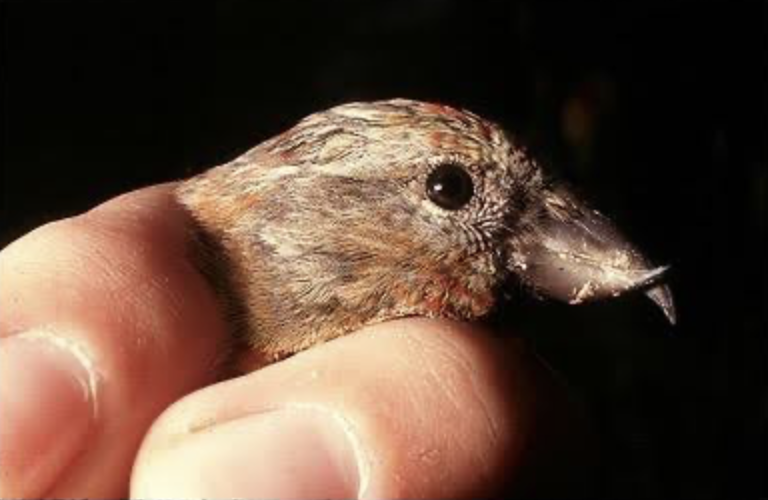
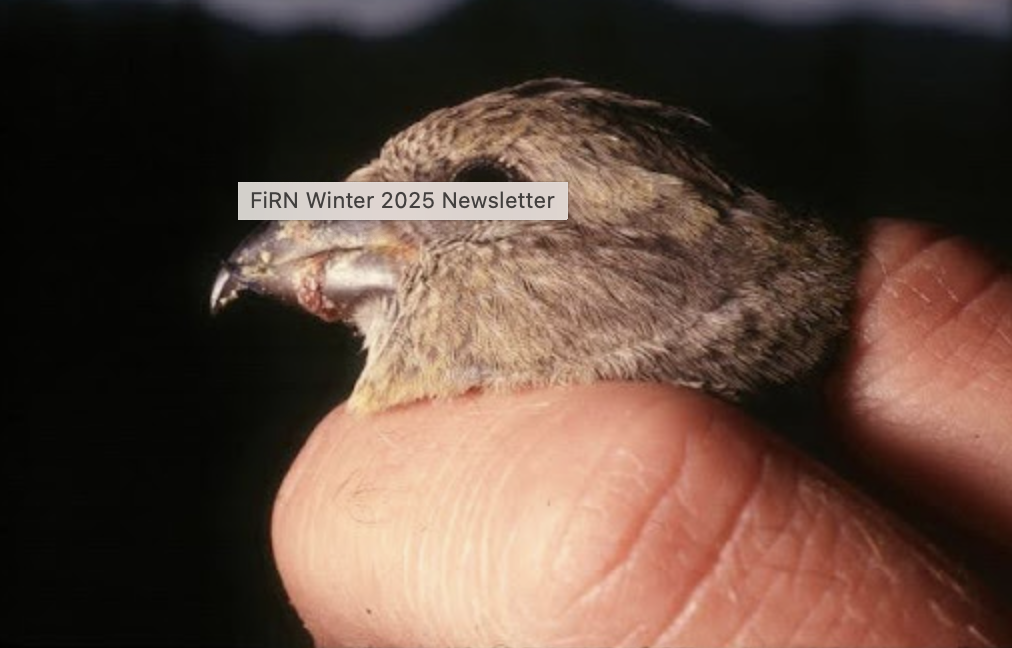
By early July there were thousands of crossbills in the area – an even more spectacular swarm than the type 2 and 4 swarms I’d studied over the previous year. And interestingly, despite being essentially a stone’s throw from the San Juan Islands, there were no Type 4s; this mob was heavily biased toward Type 3 (with a handful of Type 1 thrown in…I’ll write about mixed swarms in a later post).
By now I was comfortable with all the field methods I had been learning and I was primed to try to really nail down timing of breeding and see whether these birds – like the Type 2s and 4s – discontinued nesting and collapsed their reproductive physiology while molting in the fall, even if seed supplies remained high. But finding lots of crossbills is only half the battle; I still needed to find good places to catch them.
Crossbills seem to be much more comfortable coming to the ground in moderately open areas where they have a good view of potential hazards. It’s also helpful if there are small trees around the clearing that the birds can stop in as a waypoint from the tops of larger trees down to the ground. Such openings with small trees are common even in unlogged areas in the dry mid-elevation forests of the eastern Cascades and on the San Juan Islands, but on the OP, the forests are amazingly dense, and the trees in the best crossbill habitat are gigantic. Ironically, what I needed was clearcuts close to big trees. I wandered the maze of logging roads looking for options and decided to try a spot along Boulder Creek, near Lake Quinault
The site had just been logged and slash burned within the last few months. It is a gross understatement to say it was not attractive; it was pronounced to be “One of the ugliest field sites I’ve ever seen!” by my friend Rhys Bowen, who was then a graduate student at UC Davis, when he visited me there during the summer. There were still some tall heaps of tree debris that stuck up 10-15 feet in the air, potentially providing landing places for crossbills while they decided whether or not to visit my decoys on the ground. I chose a spot right at the end of a little logging road in the middle of a small clearcut close to the big trees in the Quinault Natural Area old growth, and I started mist netting near one of the bigger slash piles. Despite its ugliness, it was such a successful field site for catching crossbills that it softened my dislike for clearcuts substantially.
By this time, I had a Type 3 decoy, and she did a great job luring the Type 3s in to explore the salt I placed there. The birds were in breeding condition in early July shortly after arriving in the vicinity, and many males sang loudly and persistently from tip-tops of hemlocks and spruces all through July and into August. One thing I noticed right away was that the song phrases were different from those of the Type 2s and 4s I had become familiar with, and certain phrases were quite consistent among different males. I’ve subsequently become convinced that males in crossbill swarms converge on common song phrases – possibly even sharing phrases among individuals of different call types. Further, song phrases in most of the types tend to change noticeably from year to year, as if males in an area converge in song phrase details on an annual basis, with song structure drifting fairly rapidly across years, at least in the most nomadic of the types. It would be interesting to look into this in more detail, and birders can help by recording multiple singing males at particular locations and uploading the recordings to Xeno-Canto, or eBird (for addition to the Macaulay Library archives). The recordings would be particularly valuable if the call type of the singing individuals could be identified with certainty.
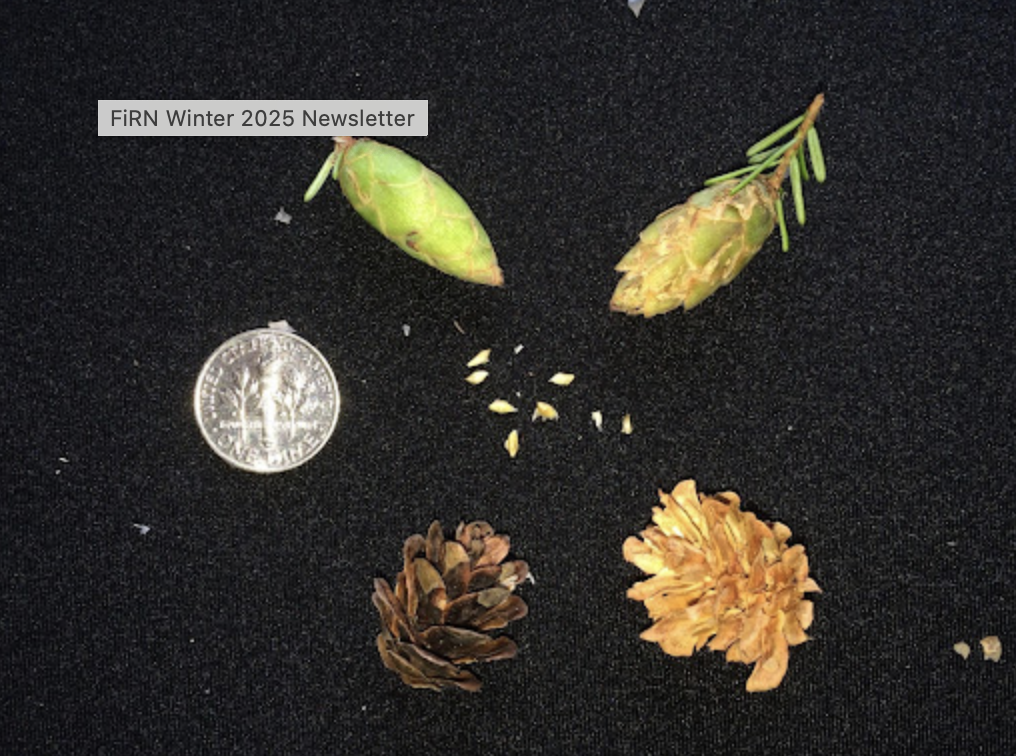
By mid-September, the Type 3s were in heavy molt with collapsing reproductive physiology and lots of begging fledglings around, and by the end of September I wasn’t catching any that were still in breeding condition. This was particularly interesting as a comparison with the Type 2 and 4 situations I had studied the previous year. Whereas the mature and open ponderosa and Doug-fir cones had started shedding seeds copiously in early September, leaving open the possibility that crossbills’ termination of reproductive competence in September/October could have been a direct response to a decline in seed availability, the western hemlock cones had matured and opened without shedding any of their seeds. It turns out that hemlock seeds are held in place in newly-matured, open cones by a resinous “glue,” so the cones remain completely full of seeds when they first open in September. Western hemlock seeds don’t begin falling until the cones have passed through several wetting and drying cycles. Although ponderosa, Doug-fir and hemlock cones all swell when wetted, causing the scales of open cones to re-close, this process is particularly pronounced and rapid in the highly “hygroscopic” (water-absorbing) hemlock cones. Further, the tiny hemlock cones also desiccate quickly during dry spells, leading them to undergo pronounced opening-closing cycles under changing weather conditions in fall and winter. The repetitive opening and closing of the cones eventually weakens the resin glue, loosening the seeds and allowing them to drop from the cones during dry, breezy weather. But it may be weeks after the cones mature in September before the seeds loosen up enough to begin falling. The samples of cones I collected revealed that the hemlock cones in the Quinault area remained completely full of mature seeds until at least the end of October, 1989, more than a month after the Type 3s had terminated breeding. While the Type 3s were also foraging on Sitka spruce cones – which do start shedding at least some of their seeds shortly after maturation – the hemlock cones alone provided a massive food supply that persisted undiminished at least into mid-autumn.
In a nutshell, then, the Type 3s accelerated into their annual molt and shut off their reproductive physiology precisely when the seed availability was at its annual peak, and when their foraging rates would have been the highest of the entire season (because the seeds were mature and maximally accessible and abundant). This, in combination with the previous discovery that the Type 2s and 4s had collapsed their reproductive physiology to a non-breeding condition while they finished molt in early autumn but then resumed breeding on the same cone crop a couple of months later (in January), put the nail in the coffin of the idea that red crossbills’ annual schedules of breeding, molt and movement were exclusively direct responses to changes in the food supply. All three of these types (2, 4, 3) were showing a highly seasonal “autumn hiatus” in breeding (and collapse of reproductive physiology) while they completed molt, and this occurred even if seeds remained abundant enough to support subsequent resumption of breeding in winter (as displayed by the Type 2s and 4s), or if the seed supply hadn’t even declined yet (as in the Type 3s).
The Type 3s did not show any signs of breeding during winter (Jan-Mar) of 1990 around Quinault, probably because dry, breezy weather in early winter led to precipitous seed fall from western hemlock and Sitka spruce cones in the area By June, 1990, numbers of Type 3s in the Quinault area had declined dramatically, and numbers remained low through the following year.
Notably, hemlock and spruce again produced great cone crops in summer of 1991, and Type 3s again swarmed the Quinault area; the timing and pattern of changing reproductive physiology and molt from July through October, 1991, was essentially identical to the pattern back in 1989. This supported the conclusion that the late summer onset of molt and termination of breeding competence in Type 3s was a consistent phenomenon.
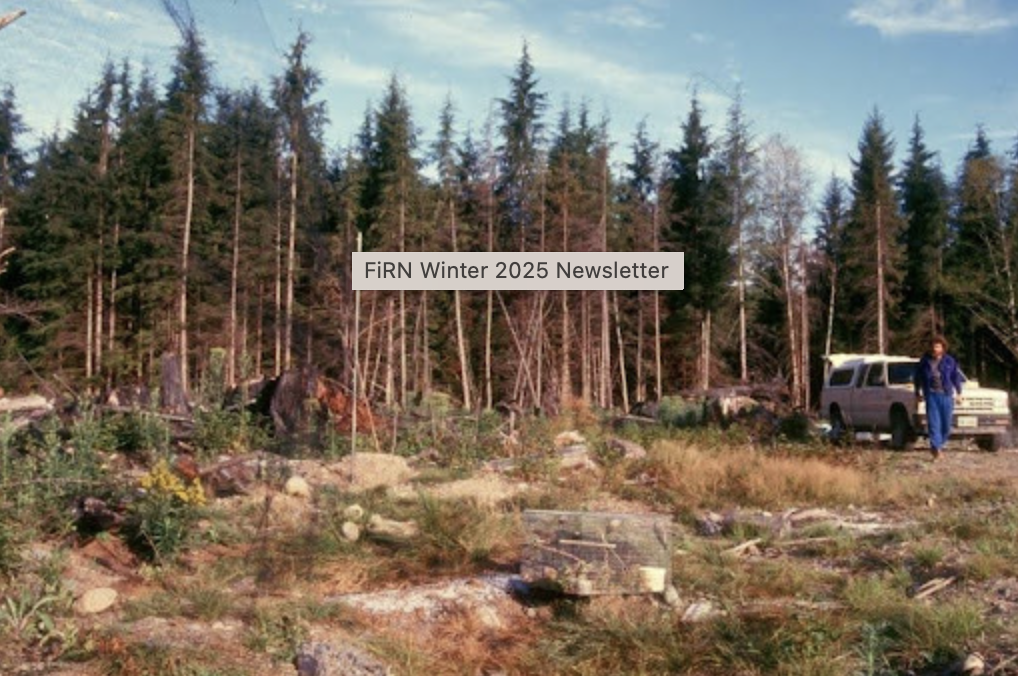
Reflecting back on my first 3 years of field work on crossbills (summer 1987 through summer 1990), it’s clear I was extremely fortunate. I had lucked into a swarm on a big Douglas-fir cone crop in the eastern Cascades in the very first year. And while that swarm appeared to have begun as mostly Type 4 (based on the few audio recordings I made in summer 1987), it had developed into a multi-type (4, 3, 2, 5) swarm by winter/spring 1988. This provided me with a crash-course in northwestern crossbill diversity right from the start, laying the groundwork for my interest in exploring the annual cycle phenology of multiple types in subsequent years. Further, it was amazingly fortuitous that at the time I was trying to get started, Jeff Groth happened to have already just worked out the details of most of the North American call types, and was generous in sharing his findings with me. I then had the further good fortune to find and spend a lot of time with three different crossbill breeding swarms in the next two years: one on the huge ponderosa pine cone crop east of the Cascade crest (1988-89), one on the huge Douglas-fir cone crop on the San Juan Islands (also 1988-89), and one on the huge western hemlock / Sitka spruce cone crops on the western Olympic Peninsula (1989-90).
It was impossible not to be impressed by how Type 2s had predominated in the ponderosa, Type 4s in the Douglas-fir, and Type 3s in the hemlock/Sitka spruce habitats. The relative “purity” of these three swarms was enough to tempt the suspicion that these types might be obligately associated with specific tree species, particularly in summer when foraging on immature cones. We’ll come back to this issue in a later posting when I talk about my perspective on the strengths and weaknesses of Craig Benkman’s “Key Conifer Hypothesis” as an explanation either for evolution of different crossbill call types / ecomorphs, or for habitat associations and movement patterns of the different call types.
For now, I’ll close by noting that by summer of 1990, there were still two other crossbill call types (besides, 2, 3 and 4) that I had encountered during my field work, Type 5 and Type 1 (Type 10 had not yet been described, but if I had encountered any on the OP I would have called them Type 4 based on flight calls, and I never encountered any “Type 4” on the western OP in those years). Type 1 were relatively rare visitors to the Olympic Peninsula, mostly during the same years that Type 3 swarmed there on hemlock/spruce bumper crops, and I don’t have a lot to say about them. But I have a lot of experience with Type 5, and in the next installment we’ll head to northwestern Wyoming, where I first encountered a preponderance of these fascinating birds. The forests of lodgepole pine, Douglas-fir, Engelmann spruce, and blue spruce in and around Grand Teton Park can be nothing short of dazzling to a crossbill enthusiast in big cone years, and my experiences there solidified my developing belief that mixed conifer forests are critical to all crossbill types, and forest diversity (including non-conifers!) is actually essential to the evolution and persistence of at least all of the nomadic crossbill forms.
Cover photo credit of Michael O’Brien
Check out previous installments of Tom’s story here: Part 1, Part 2, Part 3, Part 4, Part 5
Membership — To help support our mission, please consider becoming a member where you will get our quarterly newsletter: https://finchnetwork.org/product/membership
Book Link
For help with Finch ID and much much more, here is a link to the exciting and newly released Stokes Guide to Finches of the United States and Canada: https://www.amazon.com/Stokes-Finches-United-States-Canada/dp/0316419931
A Crossbill’s Guide to Conifers for the Western Forest: https://finchnetwork.org/a-crossbills-guide-to-conifers-in-western-north-america
A Crossbill’s Guide to Conifers for the Eastern Forest: https://finchnetwork.org/a-crossbills-guide-to-conifers-of-the-northeastern-forest
The Finch Research Network (FiRN) is a nonprofit, and was granted 501c3 status in 2020. We are a co-lead on the International Evening Grosbeak Road to Recovery Project, and have funded $22,000+ to go towards research, conservation and education for finch projects in the last couple years. FiRN is committed to researching and protecting these birds like the Evening Grosbeak, Purple Finch, Crossbills, Rosy-finches, and Hawaii’s finches the honeycreepers.
If you have been enjoying all the finch forecasts, blogs and identifying of Evening Grosbeak and Red Crossbill call types (20,000+ recordings listened to and identified), redpoll subspecies and green morph Pine Siskins FiRN has helped with over the years, please think about supporting our efforts and making a small donation at the donate link below. The Evening Grosbeak Project is in need of continued funding to help keep it going.
Donate – FINCH RESEARCH NETWORK (finchnetwork.org)
Please think about joining Finch Research Network iNaturalist Projects:
Winter Finch Food Assessment Project/Become a Finch Forecaster: https://finchnetwork.org/the-finch-food-assessment-become-a-finch-forecaster
Red Crossbill North American Foraging Project: https://finchnetwork.org/crossbill-foraging-project
Evening Grosbeak North American Foraging Project: https://finchnetwork.org/evening-grosbeak-foraging-project
Filed Under: Uncategorized Tagged With: #finches, #finchnetwork, #finchresearchnetwork, #irruptions, Evening Grosbeaks

